Eleven energy-efficiency improvement opportunities in compressed air systems
Instrumentation consumes large amounts of compressed air at many individual locations in a textile plant, but these uses are susceptible to leakage. Most such leaks are at threaded connection points, rubber hose connections, valves, regulators, seals, and in old pneumatic… Read more
Jul 24, 2015 | By Edvard Csanyi

Maintenance of electrical equipment in buildings
Apart from safety, maintenance is needed to keep plant in an acceptable condition. Maintenance of this kind must be reviewed on an economic and energy efficiency basis. While it is appreciated that breakdown of plant may result in costly interruption… Read more
Jul 08, 2015 | By Edvard Csanyi
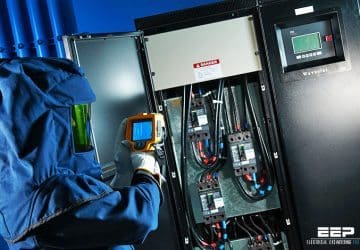
3 Lighting Essentials You Can’t Deny
Lighting systems in industrial facilities can represent an attractive savings opportunity, especially if lighting systems have not been upgraded or maintained in the past five years. The most cost-effective approach for lighting energy savings is to address the following three issues, in… Read more
Apr 03, 2015 | By Edvard Csanyi

Good voltage regulation and justified power factor correction
Power factor correction and voltage regulation are closely related. In many cases, the desired voltage regulation is costly to obtain. Larger or paralleled conductors to reduce voltage drop under load are, in many cases, the proper solution. However, power factor… Read more
Apr 01, 2015 | By Edvard Csanyi

Six energy efficiency improvement opportunities in fan systems
Efficiencies of fan systems vary considerably across impeller types. The average energy saving potential in these systems in the U.S. manufacturing industry is estimated at 6%. For optimal savings and performance, it is recommended that a systems approach is used…. Read more
Mar 27, 2015 | By Edvard Csanyi

14 energy-efficiency improvement opportunities in pumping systems
Pump systems consist of pumps, driver, pipe installation and controls (such as ASDs or throttles) and are a part of the overall motor system. Below some of the energy efficiency opportunities for the pumping system are presented. Also, American Society… Read more
Oct 13, 2014 | By Edvard Csanyi
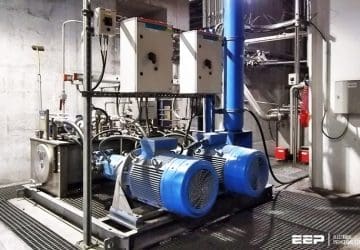
Energy Efficiency Aspects of Electric Motors
Three-phase squirrel-cage induction motors comprise a considerable percentage of the electrical load in the United States. Design, operation, and maintenance of these machines is well described in some of the articles already published. This article focuses on their energy efficiency aspects…. Read more
Oct 01, 2014 | By Edvard Csanyi
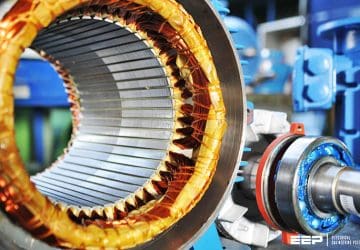
8 Energy-Efficiency Improvement Opportunities In Electric Motors
When considering energy-efficiency improvements to a facility’s motor systems, a systems approach incorporating pumps, compressors, and fans must be used in order to attain optimal savings and performance. In the following, considerations with respect to energy use and energy saving… Read more
Sep 29, 2014 | By Edvard Csanyi
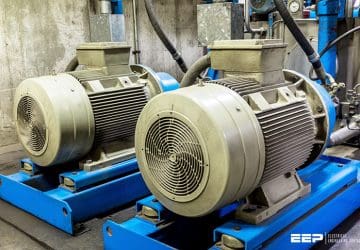
An example of calculating the number of indoor lighting fixtures
These are the input data for the following calculation: An office area has length: 20 meter; width: 10 meter; height: 3 meter. The ceiling to desk height is 2 meters. The area is to be illuminated to a general level… Read more
Aug 18, 2014 | By Jignesh Parmar

Total Losses in Power Distribution and Transmission Lines (2)
Continued from first part: Total Losses in Power Distribution & Transmission Lines (1) There are two types of transmission and distribution losses: Technical losses (explained in previous part) Non-technical losses (commercial losses) Non-technical losses are at 16.6%, and related to… Read more
Mar 03, 2014 | By Jignesh Parmar

Automatic transfer switch (ATS) between two low-voltage utility supplies
Multiple utility services may be used as an emergency or standby source of power. Required is an additional utility service from a separate source and the required switching equipment. Figure 1 shows automatic transfer between two low-voltage utility supplies. Utility… Read more
Jan 15, 2014 | By Edvard Csanyi
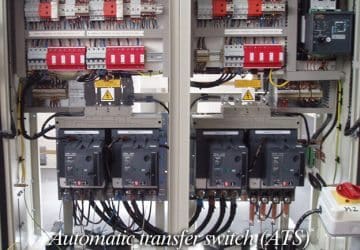
Electrical Thumb Rules You MUST Follow (3)
Continued from second part: Electrical Thumb Rules You MUST Follow (Part 2) For Motor Size of Capacitor = 1/3 Hp of Motor ( 0.12x KW of Motor) For Transformer < 315 KVA 5% of KVA Rating 315 KVA to 1000… Read more
Sep 02, 2013 | By Jignesh Parmar

Electrical Thumb Rules You MUST Follow (2)
Continued from first part: Electrical Thumb Rules You MUST Follow (Part 1) For Sinusoidal Current: Form Factor = RMS Value/Average Value = 1.11 For Sinusoidal Current: Peak Factor = Max Value/RMS Value = 1.414 Average Value of Sinusoidal Current (Iav)… Read more
Aug 28, 2013 | By Jignesh Parmar

What is the rewind scenario if a motor fails?
Unlike an initial motor purchase where your decision is limited to procuring a standard versus a premium efficiency motor, a motor failure or burnout produces three alternatives. Your options are to rewind the failed motor, purchase a new standard-efficiency motor,… Read more
Jul 10, 2013 | By Edvard Csanyi
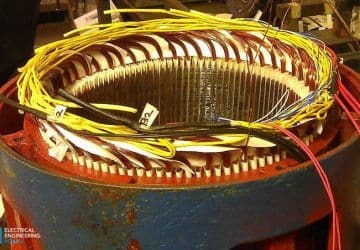
How to calculate voltage regulation of distribution line
Introduction to voltage regulation Voltage Regulation for 11KV, 22KV, 33KV Overhead Line Permissible Voltage Regulation (As per REC) Voltage Regulation Values Required Size of Capacitor Optimum location of capacitors Voltage Rise due to Capacitor installation Calculate % Voltage Regulation of… Read more
Jun 10, 2013 | By Jignesh Parmar


